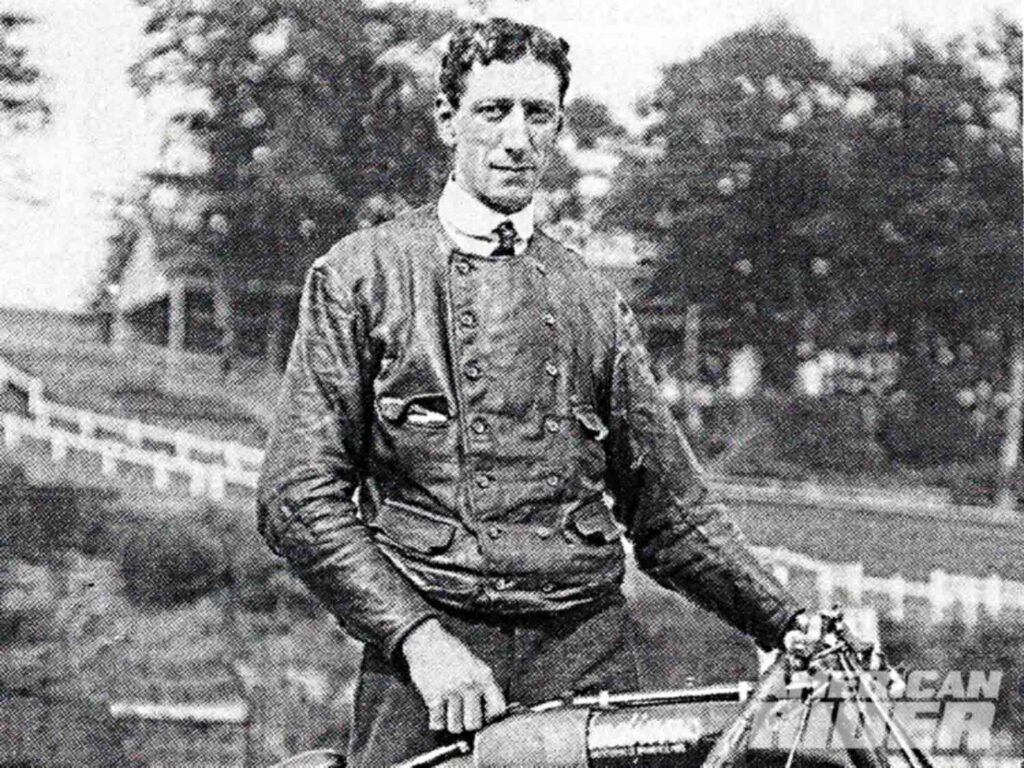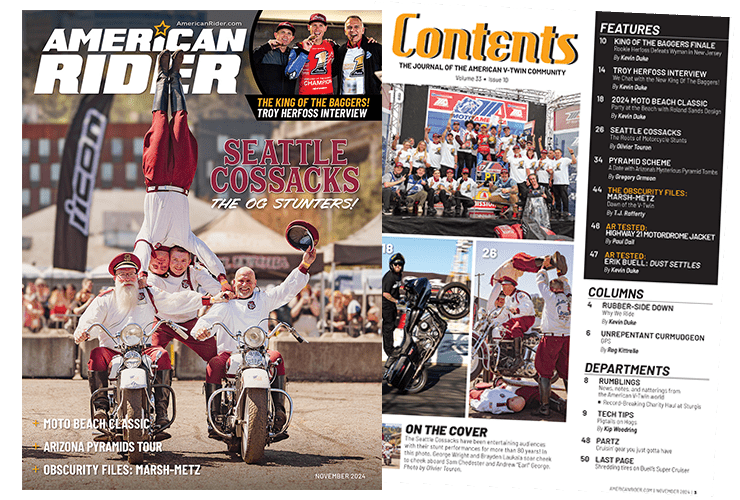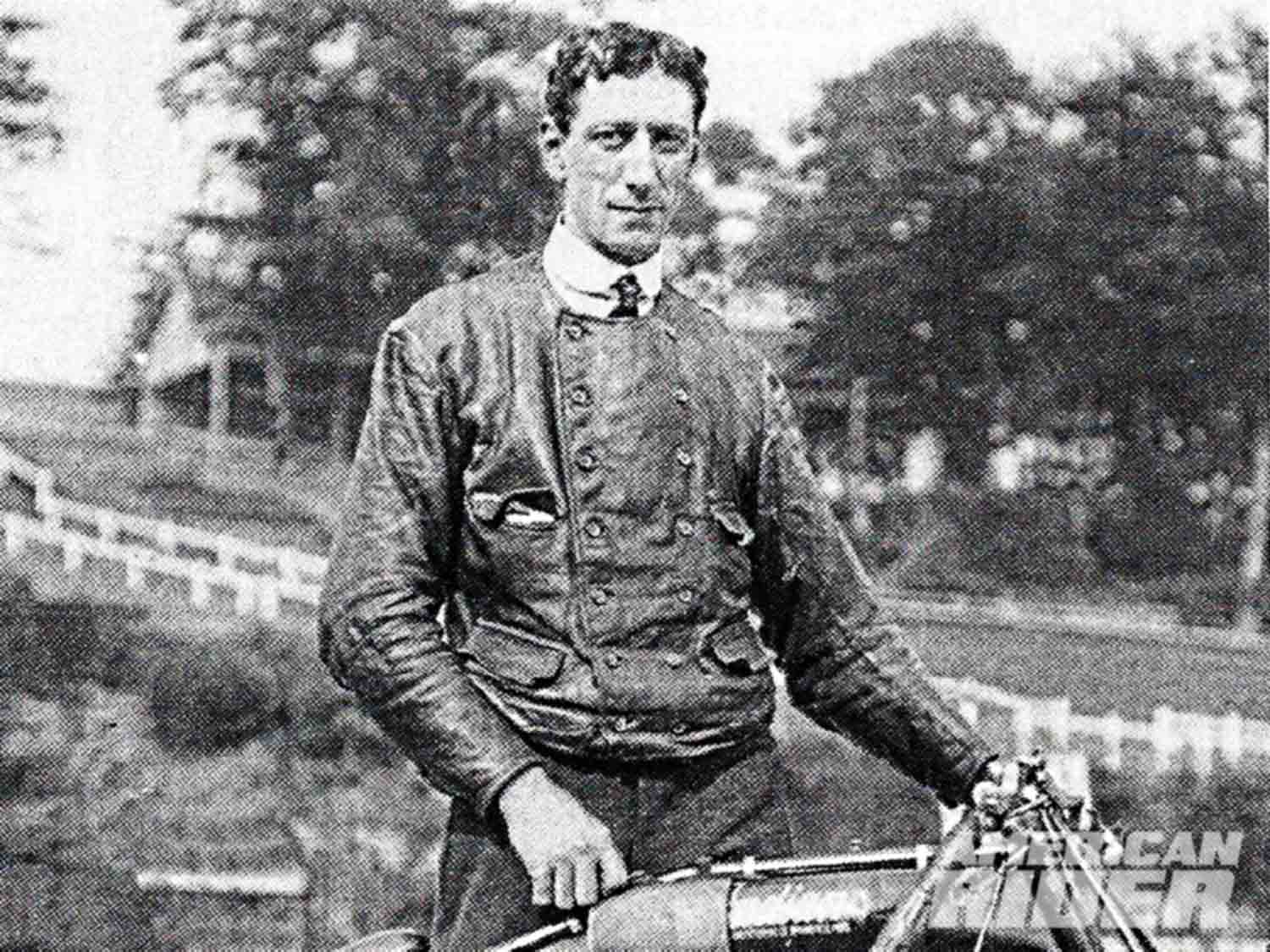Charles B. Franklin, the lean, gangly Irishman who gave us what many believe is the best Indian ever made, managed a lot more than that in his life and career.
In 1894, he went off to the newly founded St. Andrew’s College, Dublin, graduating with a degree in electrical engineering and a passion for the new two-wheelers that were just starting to appear. Franklin had started his career at an electrical company, and little is known of his involvement with motorcycles for the next few years.
Charles B. Franklin gained notoriety in 1903 by finishing 8th in a “reliability trial” aboard a Belgian FN. From that point forward, it became increasingly evident that “C.B.” was a notable prodigy in a nascent sport. He raced at the Isle of Man TT from 1908-1914. The engineer who raced became a racing engineer.

At the time, a gentleman named Billy Wells was the Indian distributor in Great Britain, and he had noticed young Franklin’s knack for speed. He also knew the factory was going to make a big push at the IoM TT in 1911 with the full support of a professional team of factory racers.
Related: Early Rider: 1900-1917
This was to be the first race around the entire island, over 37 miles to a circuit, up a mountain, on gravel, dirt, sand, and cobblestone, and back down for five laps. Then as now, the TT was the most challenging and deadly race in the world.
Wells liked the odds because Indian had a couple of major advantages. Indian V-Twins had an all-chain drive when the rest were still using leather belts. The bikes from America also had clutches and 2-speed gearboxes, while the competition was still messing around with variable pulleys. That’s how it came to pass that Indian won all three top places. Our man Franklin finished second behind a rocket rider named Oliver Godfrey.
In 1914, Charles B. Franklin opened an Indian dealership in Dublin, but business was slow because of a world war and some weird tariffs on American motorcycles. Back at the Indian factory, the old Hedstrom engine designs and even the Powerplus engine had advanced about as far as they could. Something better and easier to build was needed.

By 1916, the writing was on the wall for Franklin’s struggling dealership. Wells came to the rescue by bringing Franklin to Springfield as an assistant engineer for Indian, which was a twist of fate that gave us the Scout and the Chief, and none too soon.
The motorcycle industry in the U.S. was collapsing in 1920, the year Franklin’s brainchild, the Indian Scout, came to market. By 1921, it was clear that the sensational Scout had helped Indian survive the downturn, and things perked up a little in 1922. Franklin was ready with a new Big Twin engine that would see the company through the next 30-plus years, fitted to the all-new Chief.
Being, in essence, a bigger Scout, the Chief was a huge hit, actually out-selling the Scout. Their side-valve (flathead) engines were cheaper to manufacture, easy to maintain, and reliable, a trifecta of improved design that didn’t go unnoticed by the men in Milwaukee. Harley followed suit as soon as it could, and H-D’s flathead engine became the mainstay of motorcycling in America until after World War II.


















